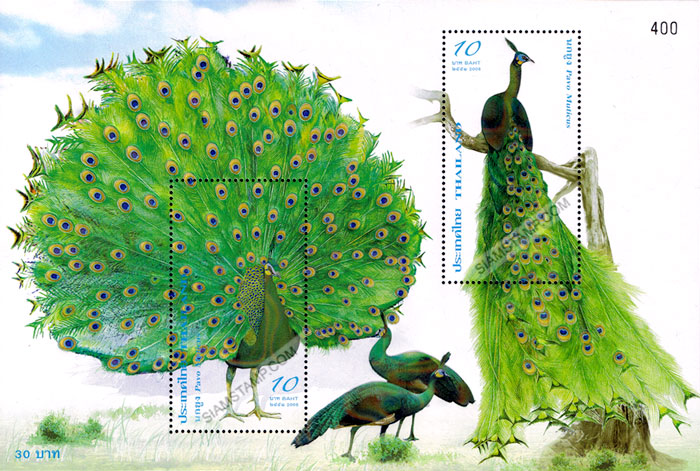Embraced by kings and freedom fighters alike, Myanmar’s peacocks have long been a national symbol of pride and resistance – but they are becoming ever harder to spot in the wild. Decades ago the birds, with their bright green plumage and famously ostentatious male tail feathers, were ubiquitous. For Myanmar, the declining peacock population is more than just a conservation tragedy – it’s a blow to the national psyche. The bird occupies a lofty place in the country’s culture. For decades it was the official symbol of Myanmar’s last kings, the Konbaung dynasty. Their monarchs wore peacock insignia on their robes and famously sat atop the Peacock Throne until their rule was toppled by British colonialists. During his fight against the British in the early 20th century, independence hero Aung San – the father of democracy icon Aung San Suu Kyi – created a magazine named the Fighting Peacock. Years later, Suu Kyi and her National League for Democracy adopted the same bird as their party emblem in their long years of struggle against military rule.
Whenever protests broke out on the streets of Yangon, peacock flags could be seen fluttering above the crowds. Now elevated to the role of Foreign Minister and State Counsellor since her party swept to victory in last year’s elections, Suu Kyi delivers press conferences besides visiting dignitaries in front of an embroidered peacock wall hanging. But some worry the birds will soon only be visible inside history books and political rallies unless action is taken.
Having once ranged from India to Indonesia, the green peafowl, as it is officially known, is in severe decline. The International Union for Conservation of Nature currently lists the species as endangered on their red list. “It has undergone a serious decline and the only sizeable remaining populations are found in dry forests in Cambodia, Myanmar and west-central Vietnam,” the IUCN says, adding pockets still persist in northern Thailand, southern Laos, China’s Yunnan province and on Indonesia’s Java island.
It is believed to be extinct in Bangladesh, peninsula Thailand and India – with the exception of a few individuals occasionally encountered in India’s far northeastern Manipur state bordering Myanmar.
The Ministry of Environmental Conservation and Forestry in Naypyidaw says the birds are protected under the Wildlife Act of Myanmar, which prohibits their capture or killing.
Greater public awareness of the peacock’s plight, particularly in rural areas, will be critical in bringing Myanmar’s unofficial national animal back from the brink, says U Thet Zaw Naing. “The most important thing is to educate the people about how these peacocks are precious for the people and how Myanamar should be proud to have peacocks,” he said.
Peafowl are omnivores and eat most plant parts, flower petals, seed heads, insects and other arthropods, reptiles, and amphibians. Wild peafowl look for their food scratching around in leaf litter either early in the morning or at dusk. They retreat to the shade and security of the woods for the hottest portion of the day. These birds are not picky and will eat almost anything they can fit in their beak and digest. They actively hunt insects like ants, crickets and termites; millipedes; and other arthropods and small mammals.
Read more at http://www.star2.com/living/animals/2016/09/30/myanmars-precious-peacoc…
Additional source: Wikipedia
https://en.wikipedia.org/wiki/Peafowl

- Login om te reageren
